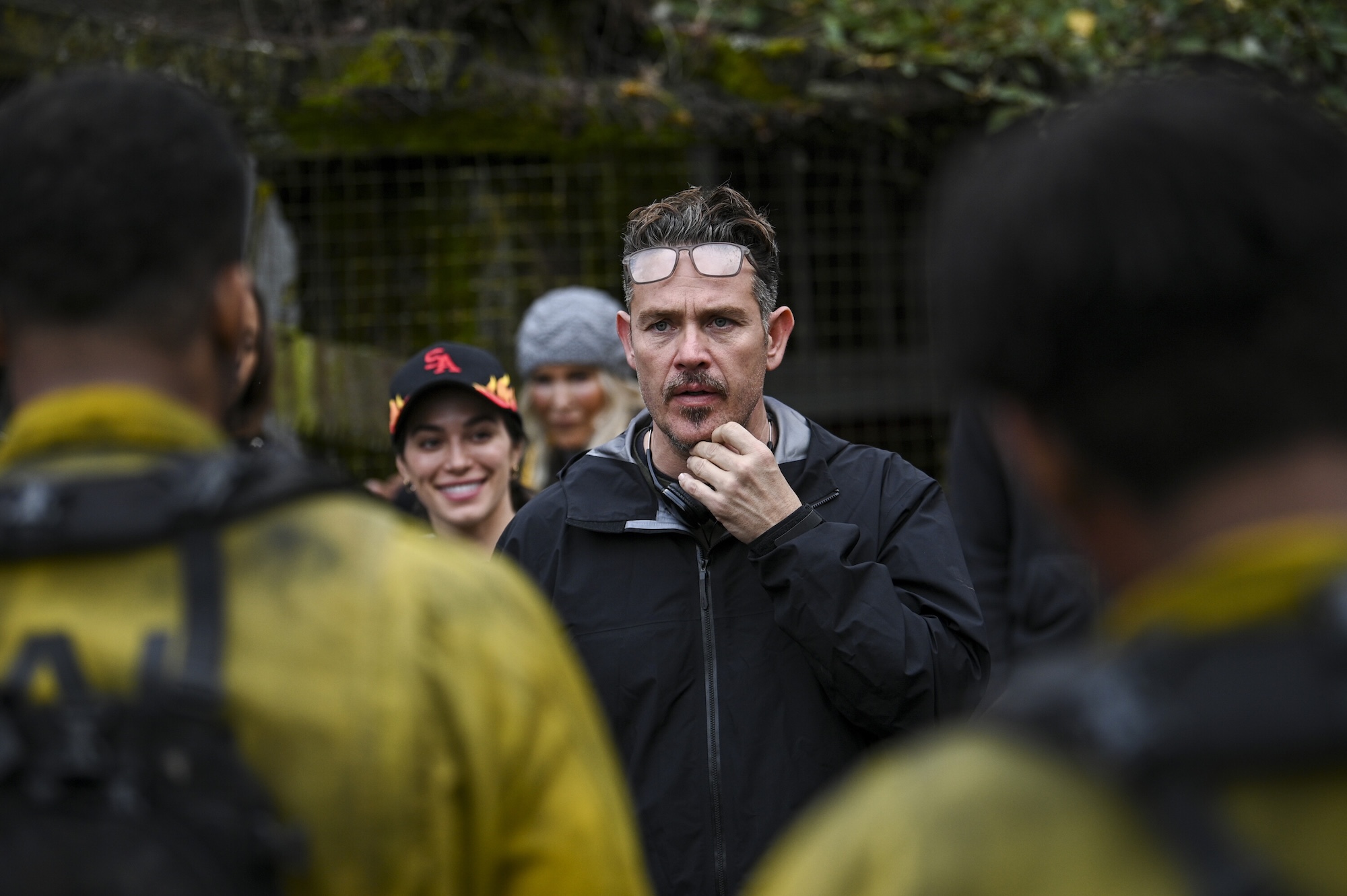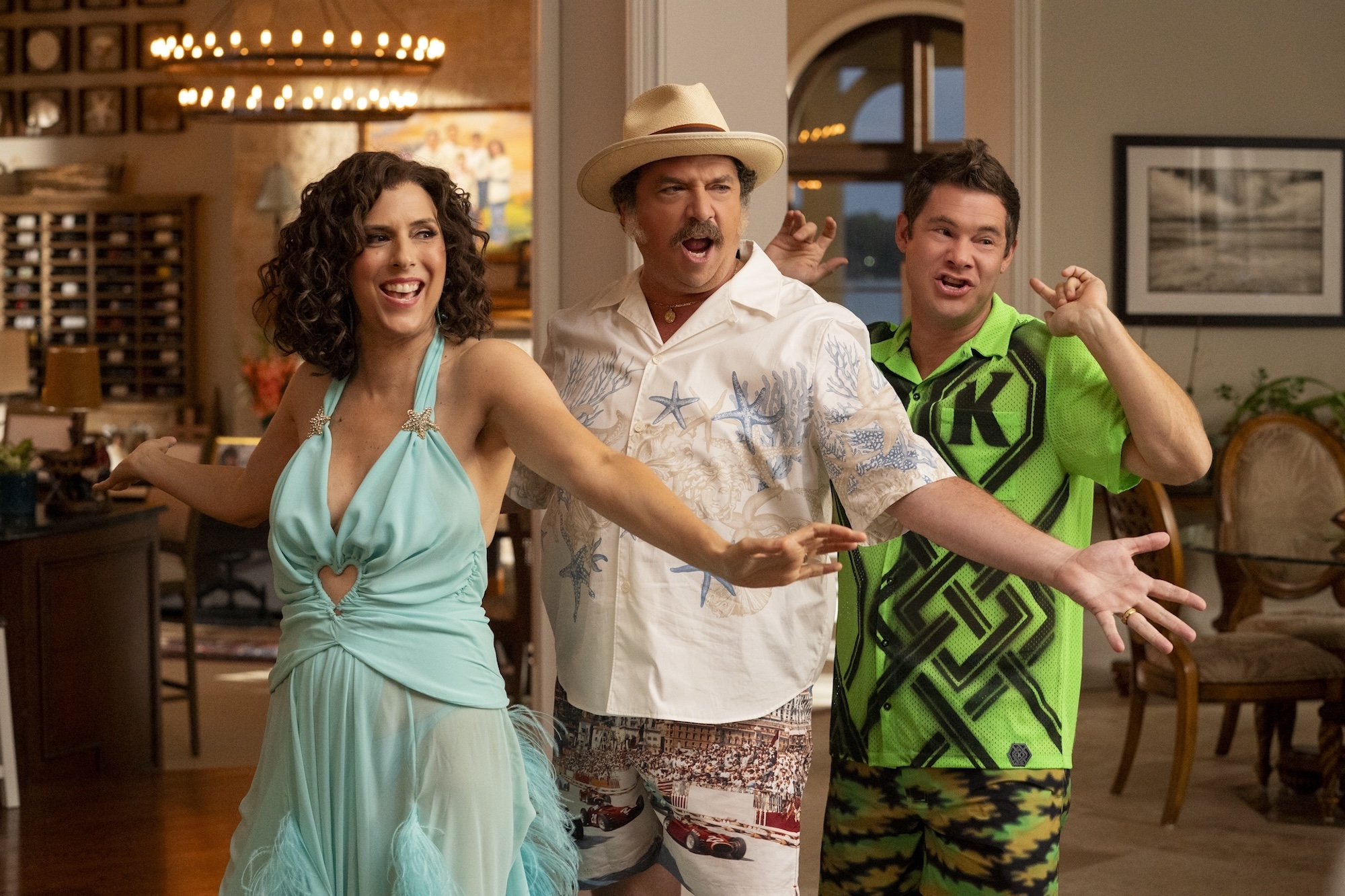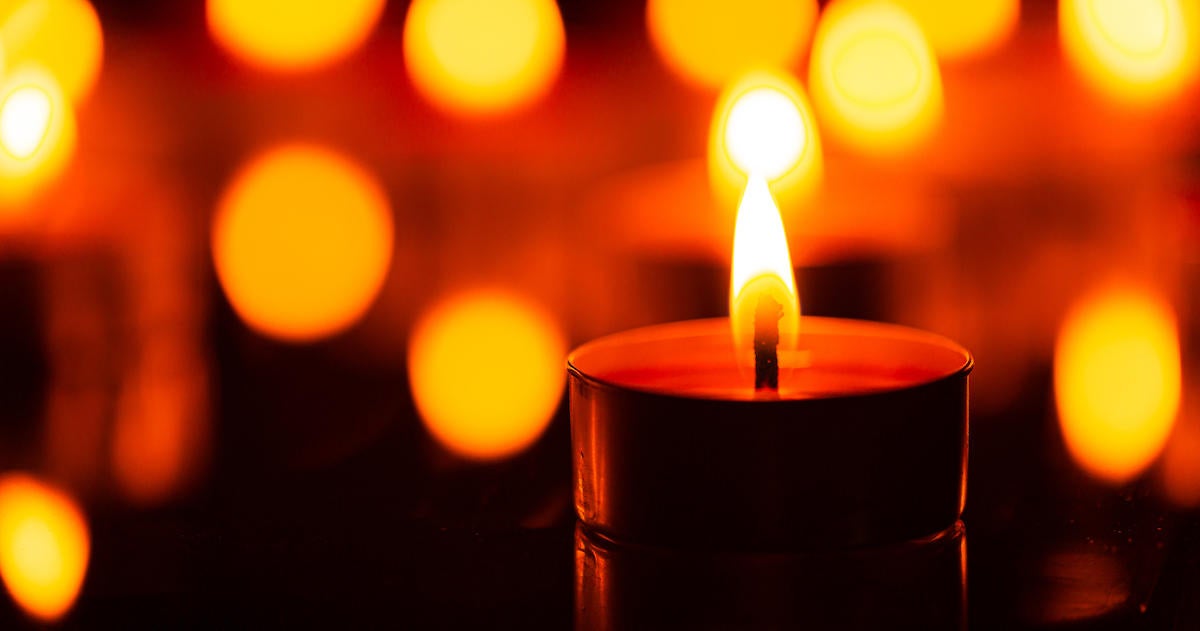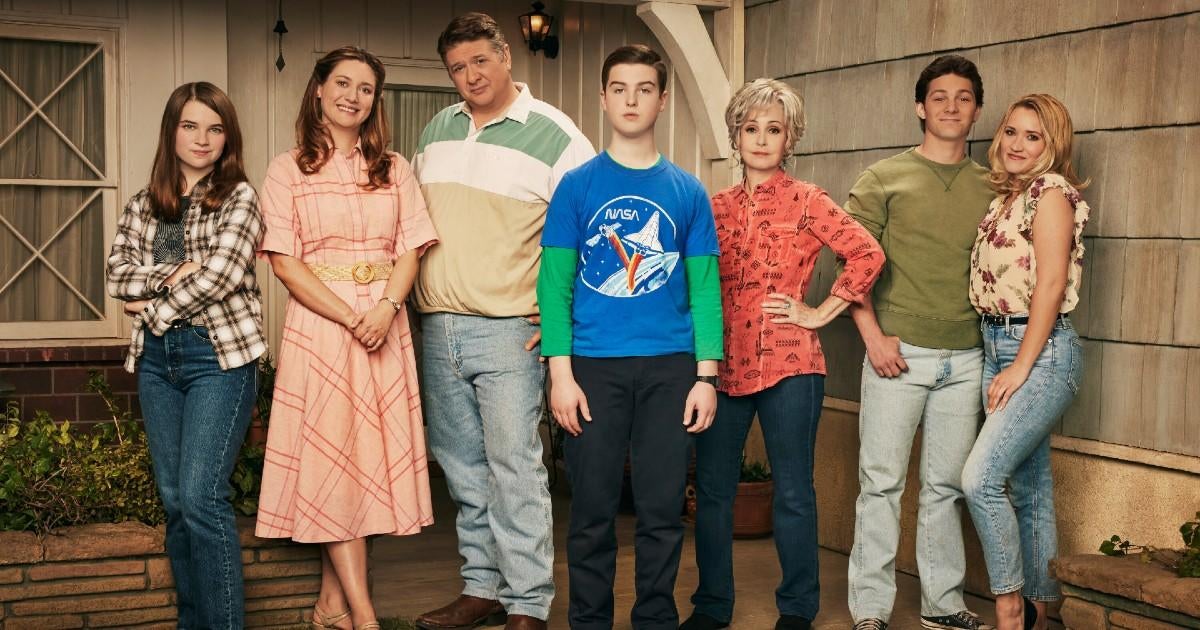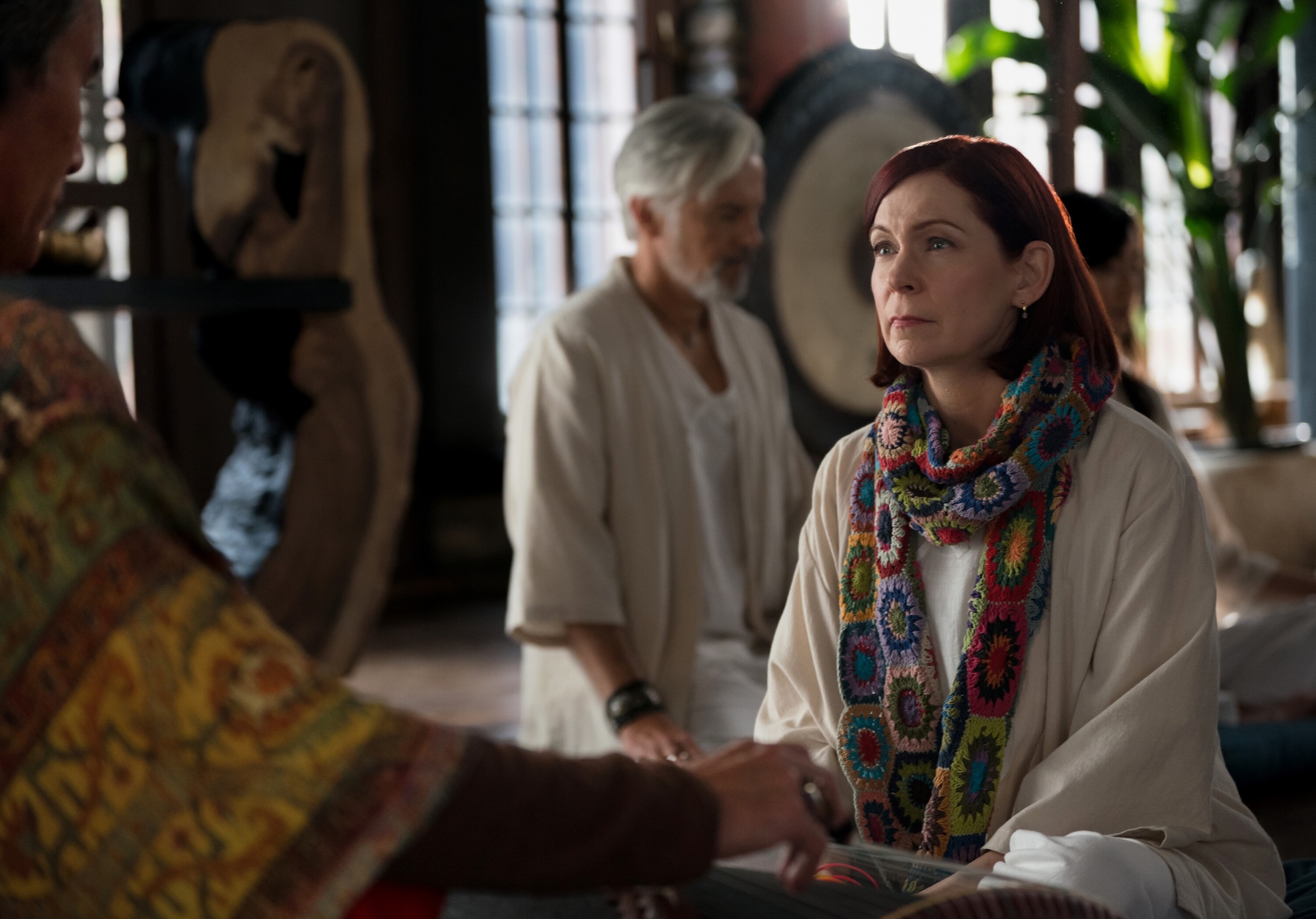‘House of the Dragon’ Season 2 Finale Breakdown: Has ‘House of the Dragon’ Spoiled Itself?
:no_upscale()/cdn.vox-cdn.com/uploads/chorus_asset/file/25562985/spoiler_warning_v2.2.jpg)
Back in May, House of the Dragon writer Sara Hess said that the decision to scale back Season 2 from 10 to eight episodes “wasn’t really our choice.” Dragon’s audience didn’t have a choice either, but viewers have had their say since Sunday, and most seem to have sided with Hess. This season didn’t quite get to where book readers estimated it might end; Episode 8 would have worked great as the setup for a final couple of episodes, but it had way too many loose threads and half-fulfilled plot points to feel satisfying as a season finale. All in all, this was one of the more bizarrely structured seasons of TV I can remember—and unfortunately, the odd ending puts a damper on what had at one point been looking like a strong season.
Nevertheless, we’re here to take a look at all the lore, big questions, and book implications we can. Here are my thoughts on “The Queen Who Ever Was.”
Deep Dive of the Week: Everything Daemon’s Final Vision Tells Us About the Future of House of the Dragon
I must admit to a growing fatigue about the extent to which House of the Dragon has used prophecy to create character growth and move the story forward. In a 2000 interview, George R.R. Martin explained his own philosophy regarding the use of prophecy in storytelling, saying, “Prophecy is one of those tropes of Fantasy that is fun to play with, but it can easily turn into a straightjacket if you’re not careful.” He continued: “One of the themes of my fiction, since the very beginning, is that the characters must make their choices, for good or ill. And making choices is hard.”
But House of the Dragon is all-in on prophecy, and I’m grateful, at least, for the fodder it provides for this column. This week, we reach the culmination of Daemon’s Harrenhal arc, resulting in a rich vision in the godswood. Daemon gets glimpses of the future and even communes with Helaena, who herself has been rattled by visions from a young age. Let’s break down what it all means.
Before Daemon’s vision even begins, he sees an antlered figure disappear behind Harrenhal’s heart tree:
:no_upscale()/cdn.vox-cdn.com/uploads/chorus_asset/file/25562988/Screenshot_2024_08_06_at_1.21.37_PM.png)
All images via HBO
This is a deep cut. Harrenhal lies on the north bank of the Gods Eye, the largest lake in Westeros. In the center of that lake is a mysterious island known as the Isle of Faces. This island has ancient significance. It’s where, many thousands of years prior to the events of House of the Dragon, the First Men and the children of the forest signed the Pact, ending a long war between the two. Faces were carved into the many weirwood trees on the island so that the gods could witness the pact, giving the island its name. It’s said that, in the current day, the Isle of Faces is the only place in the south of Westeros where a significant population of weirwoods still exists (there’s actually a very clear shot of the island and its trees in this episode when Rhaenyra and Addam arrive at Harrenhal). All the rest in the south have been cut down or burned.
In more recent times, a group known as the green men keep a “silent watch” over the island, per Catelyn in A Game of Thrones. “No one visits the Isle of Faces,” Bran tells us in A Storm of Swords. Thus, the green men are incredibly secretive to the point of possibly being apocryphal. Nursery tales claim that the green men have horns and dark green skin, though most maesters would say that they just wear headdresses of antlers and green garments.
We don’t even know what the green men do. There are rumors that some children of the forest still live on the Isle of Faces, and are protected by the green men. But no one knows for sure.
This particular green man is gone before Daemon—or we—can get too good a look at him. But for readers who’ve bought into the theory that Daemon may precede Brynden Rivers as the three-eyed crow, Westeros’s foremost greenseer, this sighting could cause a red alert. We’re very much in fan theory territory here, but this hypothesis seems much less far-fetched after “The Queen That Ever Was.”
Speaking of Brynden, this is where Daemon’s vision really begins: with a silver-haired figure encased in a tree. His wine stain birthmark gives him away: This is Brynden Rivers, the same greenseer who mentors Bran Stark in Season 6 of Game of Thrones (though Thrones omitted the birthmark). The birthmark is what gives him the moniker Bloodraven.
:no_upscale()/cdn.vox-cdn.com/uploads/chorus_asset/file/25562989/Screenshot_2024_08_06_at_1.22.16_PM.png)
This is a vision of the future, as Brynden hasn’t actually been born yet. (He is also supposed to be missing an eye, a detail I imagine House of the Dragon omitted because it’d prompt some viewers to mistake him for Aemond). Bloodraven is actually Daemon’s great-grandson, and should appear in HBO’s forthcoming A Knight of the Seven Kingdoms, which is set about 100 years after House of the Dragon.
Next up, a three-eyed bird flies in front of Bloodraven’s face:
:no_upscale()/cdn.vox-cdn.com/uploads/chorus_asset/file/25562990/Screenshot_2024_08_06_at_1.29.24_PM.png)
I’m not much of a bird watcher, but to my eye this is a crow. That’s a neat detail—Thrones changed the bird to a raven, probably to avoid confusion when the Night’s Watch is so frequently referred to as “crows.” But in the books, Brynden appears to Bran as the three-eyed crow, not the three-eyed raven, and this is a nod to that.
Next up, a White Walker with an army of wights:
:no_upscale()/cdn.vox-cdn.com/uploads/chorus_asset/file/25562992/Screenshot_2024_08_06_at_1.22.51_PM.png)
I don’t think that one needs much explanation. I do wonder if this is more or less what Aegon the Conqueror saw in his vision. I’m surprised this wasn’t the Night King himself.
Then, a couple of dragons lie dead on a battlefield:
:no_upscale()/cdn.vox-cdn.com/uploads/chorus_asset/file/25562997/Screenshot_2024_08_06_at_1.23.26_PM.png)
These two are difficult to identify. Book readers could guess, but then we’d get into spoiler territory. And there is more than one potential explanation, especially if the show tweaks some things from the books.
Now, a figure walks through a battlefield littered with bodies:
:no_upscale()/cdn.vox-cdn.com/uploads/chorus_asset/file/25563004/Screenshot_2024_08_06_at_1.24.27_PM.png)
As with the dragons, there are many explanations here. I’m almost certain this figure is Daemon, given that the character falls through the battlefield as a transition to the next scene, where Daemon is drowning in a black abyss:
:no_upscale()/cdn.vox-cdn.com/uploads/chorus_asset/file/25563008/Screenshot_2024_08_06_at_1.24.48_PM.png)
Next up, the comet from Season 2 of Game of Thrones:
:no_upscale()/cdn.vox-cdn.com/uploads/chorus_asset/file/25563013/Screenshot_2024_08_06_at_1.25.16_PM.png)
This comet, which also plays a big role in A Clash of Kings, is one of my favorite features in A Song of Ice and Fire. In that second novel in the series, everyone has their own explanation for what the comet means; at least a dozen different interpretations are given. Some are flat-out wrong (I don’t think the comet honored the new king Joffrey, who would go on to die in the very next novel), but others are left ambiguous. Maybe the comet really did herald the return of dragons—Daenerys’s were born shortly before its appearance. Maybe it really was sent by the Undying Ones to guide Daenerys to Qarth—Dany did follow its path there. Or maybe it’s a complete coincidence. Comets just show up sometimes.
We’ll never know for sure. But as a literary device, it provides a great signifier of how symbols and prophecies can be read in many different ways. It all depends on the character doing the interpreting.
Next up, Daenerys’s eggs in a bed of fire:
:no_upscale()/cdn.vox-cdn.com/uploads/chorus_asset/file/25563014/Screenshot_2024_08_06_at_1.26.15_PM.png)
And then the dragon queen herself, emerging with her dragon hatchlings:
:no_upscale()/cdn.vox-cdn.com/uploads/chorus_asset/file/25563015/Screenshot_2024_08_06_at_1.26.42_PM.png)
Now back to the present day, and the current dragon queen. Rhaenyra sits the throne:
:no_upscale()/cdn.vox-cdn.com/uploads/chorus_asset/file/25563018/Screenshot_2024_08_06_at_1.27.13_PM.png)
And then, the trippiest part of this whole scene for me, when Daemon turns and comes face-to-face with Helaena. “It’s all a story, and you are but one part of it,” she says. “You know your part. You know what you must do.”
:no_upscale()/cdn.vox-cdn.com/uploads/chorus_asset/file/25563019/Screenshot_2024_08_06_at_1.27.36_PM.png)
At this point, it’s revealed that Daemon isn’t just having a vision of Helaena as she exists in his head: Helaena herself is communicating with Daemon in real time from King’s Landing. Here the scene shifts to Helaena, as Aemond emerges to once again try to convince his sister to fly Dreamfyre into battle. She reveals that she knows that Aemond burned Aegon and let him fall from his dragon, essentially leaving him to die.
“Aegon will be king again,” she says. “He’s yet to see victory. He sits on a wooden throne. And you … you’ll be dead. You were swallowed up in the Gods Eye, and you were never seen again.”
Aemond says he could have Helaena killed. “It wouldn’t change anything,” she spits back.
Even casual viewers probably realize that Helaena has been right about pretty much everything she’s seen in her visions. Remember when she says in Season 1 that young Aemond will have to “close an eye” to claim a dragon? Yeah, she knows the future. And based on his facial expressions during this conversation, I think Aemond knows this about his sister.
There’s a whole free-will dilemma being cracked open by Daemon and Helaena here. Maybe part of the reason Helaena has been so passive is that, in seeing the future, she’s resigned herself to it. Maybe something similar has happened with Daemon: When Rhaenyra warns him not to leave her again, he answers, “I could not. I have tried.” (Rhaenyra notes that her own lot in life was “decided for me long ago.”) That’d largely violate Martin’s philosophy—that prophecies must remain vague enough that characters can be free to make difficult choices—but it seems to be the direction the show is heading in.
But let’s set the philosophy aside and ask a more straightforward question: Is the show straight up spoiling itself with these visions?
I’ll let showrunner Ryan Condal answer that. In a virtual Q&A with press on Monday, he explained that spoilers aren’t at the top of his mind as he writes the show:
“We’re not pretending that nobody has read Fire & Blood, and that there’s not a Wikipedia that’s there one Google link away if you want to find out what happened,” Condal said. “We dispensed with the idea that there were going to be surprises on that level right at the beginning and writing the series.”
He also noted that it would have been silly to pretend that Viserys wouldn’t die at the end of Season 1—every viewer could see that coming from miles away. Granted, there’s a difference between the audience knowing the fate of the current king on a show that is clearly about a succession crisis, and the audience knowing the fates of characters who could potentially resolve that crisis. Still, Condal continued: “I will just say that, just because a thing is told to you doesn’t mean it’s going to happen exactly that way. And we’ve seen obviously in history and all that be misinterpreted before, both in the world of Fire & Blood, and in the world of A Song of Ice and Fire.”
So maybe these visions will come to pass exactly as Daemon and Helaena have seen them, and this story will turn out to be about the journey and not the destination. Or maybe the visions aren’t as set in stone as we may think.
Quick Hits
Is this it for Nettles?
After multiple episodes of teasing, Rhaena … still hasn’t claimed Sheepstealer, the dragon that has left Dragonstone to seek fresh mutton in the Vale. But it seems very likely that she’ll do so—and that she was probably meant to do so this season before the episode count was reduced—which surely has book readers curious and sad about a fan favorite character from Fire & Blood: Nettles.
Nearly a month ago, Martin published a particularly cranky blog post. The post contained various thoughts on dragons, including a long defense of some of his dragon-related literary decisions. For example, Martin gave his dragons two legs and two wings because “no animal that has ever lived on Earth has six limbs. Birds have two legs and two wings, bats the same, ditto pteranodons and other flying dinosaurs, etc.”
He also wrote a long paragraph detailing how his dragons are not nomadic and would never be found outside Dragonstone. He specifically said that they wouldn’t be found in the Vale. Here’s the relevant paragraph:
My dragons are creatures of the sky. They fly, and can cross mountains and plains, cover hundreds of miles … but they don’t, unless their riders take them there. They are not nomadic. During the heyday of Valyria there were forty dragon-riding families with hundreds of dragons amongst them … but (aside from our Targaryens) all of them stayed close to the Freehold and the Lands of the Long Summer. From time to time a dragonrider might visit Volantis or another Valyrian colony, even settle there for a few years, but never permanently. Think about it. If dragons were nomadic, they would have overrun half of Essos, and the Doom would only have killed a few of them. Similarly, the dragons of Westeros seldom wander far from Dragonstone. Elsewise, after three hundred years, we would have dragons all over the realm and every noble house would have a few. The three wild dragons mentioned in Fire & Blood have lairs on Dragonstone. The rest can be found in the Dragonpit of King’s Landing, or in deep caverns under the Dragonmont. Luke flies Arrax to Storm’s End and Jace to Winterfell, yes, but the dragons would not have flown there on their own, save under very special circumstances. You won’t find dragons hunting the riverlands or the Reach or the Vale, or roaming the northlands or the mountains of Dorne.
This commentary is so pointed that I have to think Martin had a heads-up about where House of the Dragon was going. In Episode 6, Sheepstealer showed up in the Vale and presented a deviation from Martin’s source material—and book readers started speculating that the show was replacing Nettles with Rhaena.
In Martin’s book, a vagabond girl named Nettles claims Sheepstealer. All of the recent Rhaena action from the Vale has been a show invention, which seems to telegraph the direction the show is moving in. This is all a bit of a shame, as Nettles is unlike any other dragonrider in A Song of Ice and Fire. She’s a bastard girl born to a dockside sex worker in Driftmark. The book describes her as “black-haired, brown-eyed, brown-skinned, skinny, foul-mouthed, fearless.” And remember, in the books the Velaryons are not Black—they have typical Valyrian features: pale skin, silver hair, purple eyes. Nettles has no known Valyrian ancestry and no Valyrian features whatsoever—the only rider in all of A Song of Ice and Fire without so much as a hint of “the blood of the dragon.”
Nettles is, apparently, one of Martin’s favorite characters. A couple of years ago, a fan asked Martin whether there were characters from Fire & Blood that he’d like to write more about. He answered Nettles, rhetorically asking, “Where does she come from? Where does she go to? What is her life like?”
I have to stop here to avoid spoiling Nettles’s story, which will likely become Rhaena’s story next season. This decision is prudent in some ways—combining characters is a classic book-to-screen adaptation move for a reason, and Rhaena is underused and often forgotten in Fire & Blood. But it does represent a dramatic shift in how each medium views dragonriders. House of the Dragon is taking Fire & Blood’s Broom Boy—its promise that dragonriding isn’t just for Valyrians—and is dashing it in favor of a character whose last name is literally Targaryen.
Will this cause problems down the line? Not that I can tell based on how the plot unfolds in the book. But Martin ended his blog post by writing, “Ignore canon, and the world you’ve created comes apart like tissue paper.”
Meet Sharako Lohar
We knew that Sharako would appear this season thanks to casting news, and in the finale she finally makes her debut. Tyland and the greens think the Triarchy could be key to winning this war, and Lohar leads their fleet. So who is this mud-loving, polygamous admiral?
Well, Sharako isn’t fleshed out much in the books. Dragon’s creators have swapped Sharako’s gender for the show, but in the books the character commands a fleet of 90 warships. It’s not clear exactly how many Corlys Velaryon has at his disposal, but as is made clear on both the page and the screen, Sharako’s fleet is powerful enough to at least challenge the Sea Snake’s.
It also appears that the show is merging Lohar with another character, Racallio Ryndoon, who was part of the force that fought Daemon in the Stepstones many years earlier. The tip-off that these two characters are being merged is the detail that Sharako keeps multiple wives—an attribute that the book ascribes to Racallio. In fact, Racallio is one of the wildest characters in all of A Song of Ice and Fire. I just have to let Fire & Blood’s description do the character justice:
Surprisingly little is known of his youth, and much of what we believe we know is false or contradictory. He was six-and-a-half feet tall, supposedly, with one shoulder higher than another, giving him a stooped posture and a rolling gait. He spoke a dozen dialects of Valyrian, suggesting that he was highborn, but he was infamously foul-mouthed too, suggesting that he came from the gutters. In the fashion of many Tyroshi, he was wont to dye his hair and beard. Purple was his favorite color (hinting at the possibility of a tie to Braavos), and most accounts of him make mention of long curling purple hair, oft streaked with orange. He liked sweet scents and would bathe in lavender or rosewater.
That he was a man of enormous ambition and enormous appetites seems clear. He was a glutton and a drunkard when at leisure, a demon when in battle. He could wield a sword with either hand, and sometimes fought with two at once. He honored the gods: all gods, everywhere. When battle threatened, he would throw the bones to choose which god to placate with a sacrifice. Though Tyrosh was a slave city, he hated slavery, suggesting that perhaps he himself had come from bondage. When wealthy (he gained and lost several fortunes) he would buy any slave girl who caught his eye, kiss her, and set her free. He was open-handed with his men, claiming a share of plunder no greater than the least of them. In Tyrosh, he was known to toss gold coins to beggars. If a man admired something of his, be it a pair of boots, an emerald ring, or a wife, Racallio would press it on him as a gift.
He had a dozen wives and never beat them, but would sometimes command them to beat him. He loved kittens and hated cats. He loved pregnant women, but loathed children. From time to time he would dress in women’s clothes and play the whore, though his height and crooked back and purple beard made him more grotesque than female to the eye. Sometimes he would burst out laughing in the thick of battle. Sometimes he would sing bawdy songs instead.
Racallio Ryndoon was mad. Yet his men loved him, fought for him, died for him. And for a few short years, they made him a king.
So yeah, get ready for more Sharako in Season 3!
Where is Otto?
For the first time since Episode 2, we get a glimpse of the man who did more than any other to put this entire war into motion. Way back at the beginning of the season, Otto, who’d been dismissed as Aegon’s hand, was supposed to head to Highgarden to rally the Tyrells to the greens’ side, as they had yet to formally declare for either faction. Then he disappeared, and we later learn that Alicent’s letters to him went unanswered.
Now we know the reason for Otto’s silence: He’s in prison … somewhere.
There are no book insights—and no book spoilers—to be had here. In Fire & Blood, Otto remains in King’s Landing after Aegon fires him. And he’s instrumental in winning the Triarchy over to the greens, though he does so by way of raven, not by mud fight. If the showrunners were determined to give Otto more to do, the obvious decision would have been to send him to Essos. At his age, he might not have been able to wrestle in the muck, but he could have been given some interesting scenes. Sending him somewhere unknown instead, and revealing he’s locked away, creates a big mystery. Color me intrigued!
Total speculation: The most likely location for Otto is Honeyholt, the seat of House Beesbury in the Reach. We know that the Beesburys declared for the blacks after their lord Lyman Beesbury was killed back in Season 1. If he passed through Beesbury lands on his way through the Reach, they would have been inclined to take him prisoner.
The problem with that theory? Honeyholt lies west of Highgarden. So if Otto met with the Tyrells first, he would have had to continue to Oldtown to cross paths with the Beesburys. And if he made it to the Tyrells, why not give him a scene or two at Highgarden?
The other problem: Otto should be much too smart to get himself captured this way. It’d be out of character for him to attempt to march through territories that are openly at war with him. In the “Inside the Episode” video that aired after the finale, Condal remained tight-lipped about Otto, saying, “We don’t know quite where he is or what happened to him.”
Finally, justice for the Tyroshis
Book readers have long had a bit of a sore spot about how Game of Thrones muted Martin’s lively world. Especially in later seasons, a world that is full of color became a mess of grays and blacks. I’m talking about literal wardrobe choices and how Thrones slowly moved away from the bright sigils and eccentric outfits described in Martin’s writing in exchange for a dreary palette that was supposed to convey how dark and serious the story was becoming.
Nowhere was this sort of change more stark than in the depiction of Daario Naharis, the Tyroshi sellsword who accompanies Daenerys for a few seasons. Here’s how Daario was described in A Storm of Swords:
Daario Naharis was flamboyant even for a Tyroshi. His beard was cut into three prongs and dyed blue, the same color as his eyes and the curly hair that fell to his collar. His pointed mustachios were painted gold. His clothes were all shades of yellow; a foam of Myrish lace the color of butter spilled from his collar and cuffs, his doublet was sewn with brass medallions in the shape of dandelions, and ornamental goldwork crawled up his high leather boots to his thighs. Gloves of soft yellow suede were tucked into a belt of gilded rings, and his fingernails were enameled blue.
And in the show, we got … two pretty-looking generic dudes (thanks to an actor change), one clean-shaven, one bearded:
:no_upscale()/cdn.vox-cdn.com/uploads/chorus_asset/file/25563027/Screenshot_2024_08_06_at_5.02.48_PM.png)
:no_upscale()/cdn.vox-cdn.com/uploads/chorus_asset/file/25563030/daario_naharis_1920.jpg)
Well, the blue-hair enthusiasts got their wish this week. With Tyland in Essos, we see quite a few people who bear a striking resemblance to book Daario. I mean, just look at this guy:
:no_upscale()/cdn.vox-cdn.com/uploads/chorus_asset/file/25563033/Screenshot_2024_08_06_at_1.15.16_PM.png)
Heck, we got two blue-haired Tyroshis:
:no_upscale()/cdn.vox-cdn.com/uploads/chorus_asset/file/25563035/Screenshot_2024_08_06_at_1.17.34_PM.png)
Big episode for blue-haired representation and for everyone who enjoys a good splash of primary color.
The Board Before Us
The Triarchy is on the board thanks to Tyland’s prowess in the mud-fighting pit. That’s the biggest change to the map in a while, and it gives the greens the naval power to match the blacks. Though Aemond and Co. still have a major dragon deficit (and are facing a reunified Daemon and Rhaenyra), the greens made up some significant ground. Here’s how it all looks:
:no_upscale()/cdn.vox-cdn.com/uploads/chorus_asset/file/25563036/HotDS2PowerMap_ep8_HBO.jpg)
Next Time On …
That’s it for House of the Dragon Season 2. But we did get a full seven-second look at A Knight of the Seven Kingdoms, coming next year:
I encourage you to read Tales of Dunk and Egg, the three novellas that will serve as the basis for this next series. They’re possibly my favorite bit of writing in all of A Song of Ice and Fire. Just absolute delights. And they’re short.



